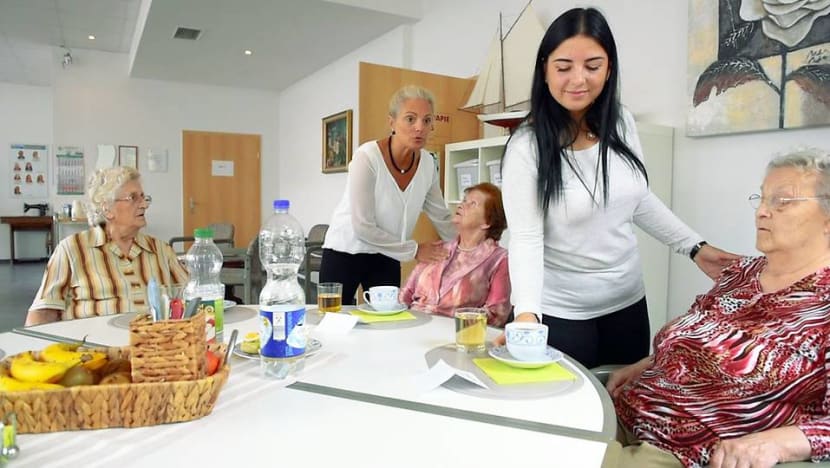Saving ‘billions’, and the aged from pain: Why preventive care makes sense
From paying for anti-frailty therapy for the aged, to rewarding people who exercise, Germany’s insurance providers are investing in preventive care to keep costs down in the long run, as CNA Insider finds out.
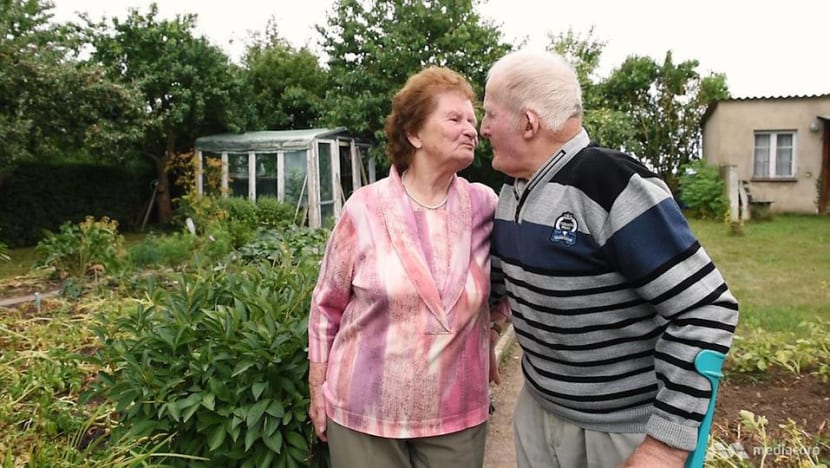
Mrs Ingeborg Meier, 86, and her husband live independently in their modest home with a garden.
Waren, GERMANY: Dr Dieter Hotzelmann gets frustrated when he talks about the default approach in healthcare to treating the elderly – that is, with surgery, drugs, and more surgery, and sometimes after it’s too late to do much else.
“It’s complete nonsense to place two new hips on a 90-year-old. Such idiocy,” he laments to CNA Insider.
“Health insurance would pay up to 30,000 euros for broken hips - only after the bone is fractured, then they pay for rehabilitation. But what if I can prevent this from happening?”
Take, for example, one of the general practitioner’s latest clients. Mrs Ingeborg Meier, 86, listened to doctors’ advice to operate on her hip which had suddenly started hurting.
The joint replacement procedure earlier this year didn’t make the pain go away – in fact, for months she had to resort to crutches, a blow for the independent senior who loves pottering about in her garden with her husband.
Said Dr Hotzelmann: “Her internal and external joint rotation is still good. If I had seen her before the surgery, I would have said we can still do something.”
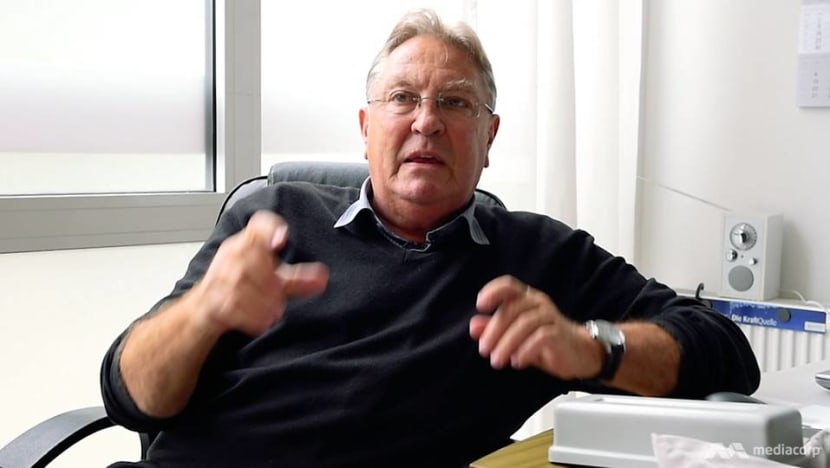
By ‘something’, he’s referring to the exercises and rehabilitative therapies that his clinic, a pioneer in its field in Germany, uses to stave off and even reverse frailty in the elderly.
The idea for Pro Mobil came about 11 years ago when Dr Hotzelmann, a GP trained in geriatrics and osteopathy, noticed a fundamental flaw in the way the healthcare system worked – which was to treat problems after they had escalated.
His logic is quite simple.
If I put a senior off long-term care, delay the degree of care for a few years, this could save billions for the government and health insurers.
His team of therapists and doctors work to keep their clients – many referred by family doctors at the first sign of frailty – independent and mobile for as long as possible, with customised exercises that employ playdough, bouncing balls and strength-training machines.
So intriguing is the clinic’s preventive approach that the country’s largest statutory health insurer, AOK, has included its treatments in its coverage. Something not all insurance companies in Germany are prepared to do yet, as this is still not considered part of regular health care.

But it’s not just about saving dollars on averted hospital care.
“If one four-week course of treatment here (at the clinic) enables a senior to stay independently at home for three to four years, that’s a big difference when you’re 85,” said Dr Hotzelmann.
Imagine lying in bed for four years, versus running around for four years.
THE DEMOGRAPHIC SHIFT
This is a crucial point because in just over decade, seniors will make up a third of Germany’s population. Policymakers have realised that for the current universal welfare system to hold up, a new model is needed to care for the ageing population.
Germans contribute about 21 per cent of their income to social security, out of which 7.3 and 1.275 per cent respectively go into compulsory health and long-term care insurance. Among European countries, Germany is expected to have one of the biggest increases in public expenditure on long term care by 2060.
Which is why in 2015, the Preventive Health Care Act came into force, highlighting certain responsibilities that must be carried out by health insurance providers with the aim of keeping Germans as healthy as possible for as long as possible – and out of institutional care.

AOK, for instance, incentivises its 24 million members to stay healthy from a young age. It does so with a range of courses on issues from nutrition and stress management, offered for free or at highly subsidised rates; and a recently-launched fitness app that gives members rebates for exercising.
“When there are less care services needed, fewer nursing homes, there are huge savings in the economy,” said Dr Hotzelmann. In all, about 4 per cent of all spending in the German health system flows into health promotion and prevention measures like vaccinations.
Meanwhile in Singapore, another country facing an ageing population crisis, insurance systems are still largely geared towards providing care for members only after an illness occurs.
And for most long term care insurance policies, including the new government-run CareShield Life scheme, members qualify for payouts if they are unable to fulfill three activities of daily living – that is, only if a person is severely disabled.
READ: Six things you should know about CareShield Life, the enhanced ElderShield scheme
READ: MPs question gender-based premiums, criteria for disability payouts
“If you get help (earlier), you may even be able to reverse your condition and stop needing that kind of care,” said Associate Professor Shirlena Huang from the National University of Singapore, who has co-authored a study on enabling Singaporeans to age well in the community.
On the one hand, the good news is that Singaporeans are among not just the longest-lived but also the healthiest people in the world. On the other hand, one local study has found that nearly half of those aged 60 and above who were surveyed were frail or pre-frail.
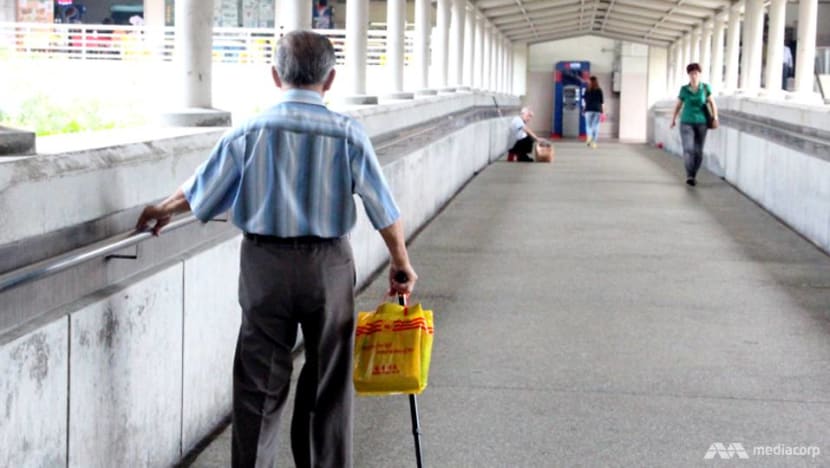
Studies have linked physical frailty to higher chances of falls, fractures, hospitalisation, disability and death – and thus higher healthcare costs. Yet the condition remains largely overlooked in Singapore.
Mr Lee Poh Wah, chief executive of the Lien Foundation, said there was an urgent need to revamp Singapore’s rehabiliation financing model, incentivise prevention and ensure that seniors remain physically and cognitively agile as long as they can.
“Once seniors become frail and begin depending on others for care, they may get caught in a spiral of irreversible decline,” he said.
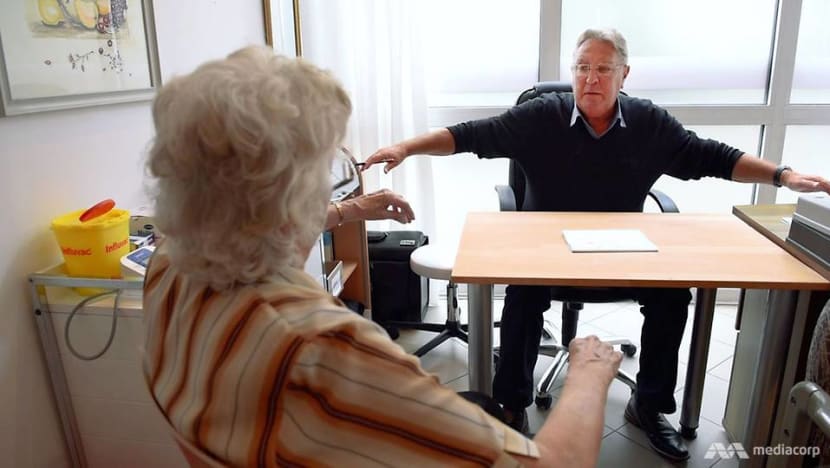
RETHINKING ELDERCARE
Retaining their independence, Dr Hotzelmann believes, starts with changing the way seniors are cared for at home by loved ones.
Many people tell their older relatives ‘please sit down, I am scared you will fall. I will do everything for you’. That’s wrong.
Instead, seniors should be encouraged to do things on their own for as long as possible, even if it takes more time and effort, he said. “If they remain seated, their muscles weaken, their sense of balance worsens, and they stop getting up altogether. Little by little, they will lose their independence.”
This belief is what underpins the work of Pro Mobil in the town of Waren, Germany.
On a visit there, CNA Insider observed as octogenarian Gertrude Fiege rolled out a ball of pink dough with her hand, pinching and pressing it into shape as directed by her ergotherapist, Ms Ulrike Baumotte.
That was the easy part. When Ms Baumotte wrapped the dough around her fingers and told her to wriggle out of the knots, her fingers start to tremble and tire.
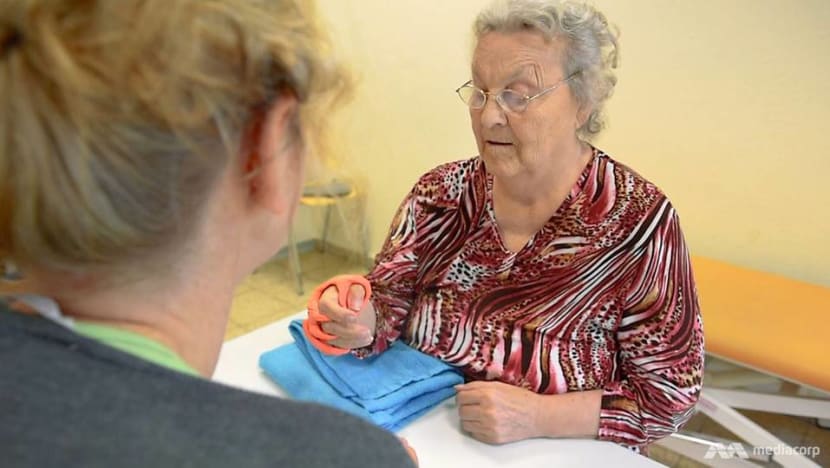
The loss of grip strength and finger dexterity is common in old age, but something that simple that most people take for granted can mean a devastating loss of independence for the elderly.
“When you can’t open the lid of a jar, or drain the water from a pot of boiled potatoes, when you can’t turn the key to unlock your door anymore, it becomes a problem for daily life,” said Ms Baumotte.
“Now is a good time for Mrs Fiege to start therapy, before her hands get too weak.”
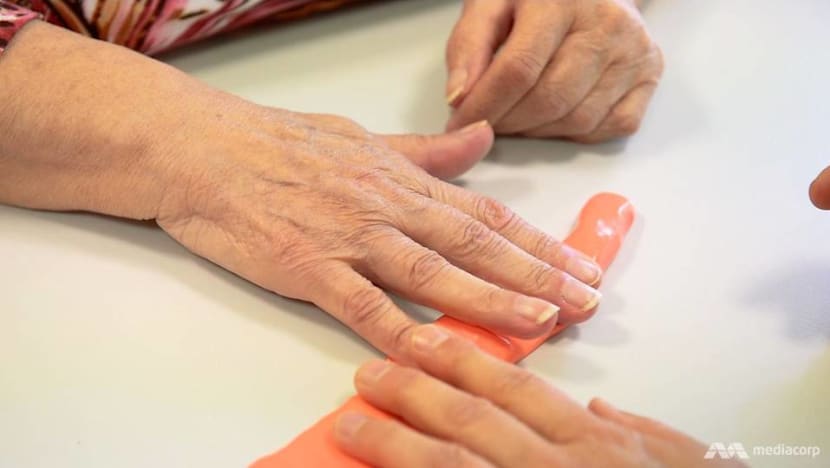
It was a little late off the mark for Mrs Meier, the woman who underwent hip surgery in April before she was referred to Dr Hotzelmann.
When she hobbled into his office on crutches, like any patient her needs were assessed (could she get out of bed and shower on her own? Did she get out of the house? etc), before a four-week course of daily strength-training and balancing exercises was prescribed.
And after just two weeks, the results were heartening indeed.
Where it used to take her 31 seconds to walk six meters, she now took 24 seconds without her walking aid. Her sense of balance was so improved, she tossed aside the crutches she’d had to rely on since the surgery.
“When I go up and down the stairs, I feel the difference. I am happy like this,” said Mrs Meier.
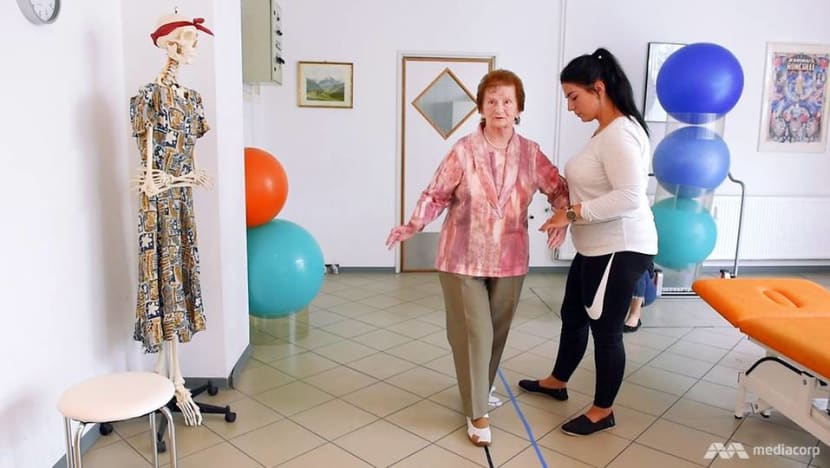
Sometimes, the results surprise even Dr Hotzelmann.
One stroke patient who was paralysed on one side of her body came to see him in the hopes of being able to move around on her own again. Every morning, her daughter would give her a call at home to check on her.
But one morning, she didn’t pick up the phone. Her panicked daughter thought she’d had another fall. But it turned out the old woman had gone to the hairdresser’s by herself, for the first time in 10 years.
“They want to be able to step out of their home without fear. Grandma should be able to go about the village, do her own groceries, meet her friends. This is what I would want for myself,” said Dr Hotzelmann.
WATCH: How they beat frailty and old age (10:10)
COSTS AND PAYOFF
The concept of preventive care through exercise is not entirely new to Singapore. Gym Tonic, a strength-training programme for seniors initiated by the Lien Foundation, is offered at over 20 venues in Singapore where trainers help the elderly fight frailty and extend their functional years.
READ: Defying frailty: How a 67-year-old is training to walk again
Members of the public who sign up for the 12-week programme at community gyms and senior centres pay nominal fees out-of-pocket, as it is not covered by any insurance schemes. The costs of the Gym Tonic machines the seniors use are borne by the foundation.
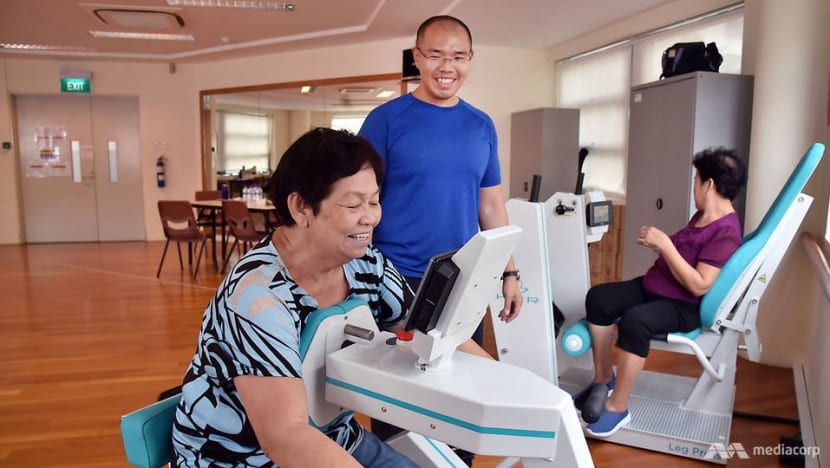
But at Pro Mobil, Dr Hotzelmann says that his clients don’t pay him anything. That’s because the cost of the programme – 2,500 euros (S$3,900) for 20 days over four weeks, including meals and transport – is claimable under some statutory health insurance providers, like AOK.
The company, like other health insurance providers, is required by guidelines to spend 7 euros a year per insured person on primary prevention and health promotion, under the 2015 Preventive Health Care Act.
That’s a mere drop – less than 1 per cent – compared to the estimated 3,000 euros spent on each AOK member per year for hospital and medical care.
Dr Hotzelmann hopes that one day, preventive programmes like his will be covered by all insurers and made accessible to everyone. Indeed, he sees it as a duty, “politically, ethically and socially”, to keep the elderly fit so that they stay valuable members of society and “not just be a medical burden”.
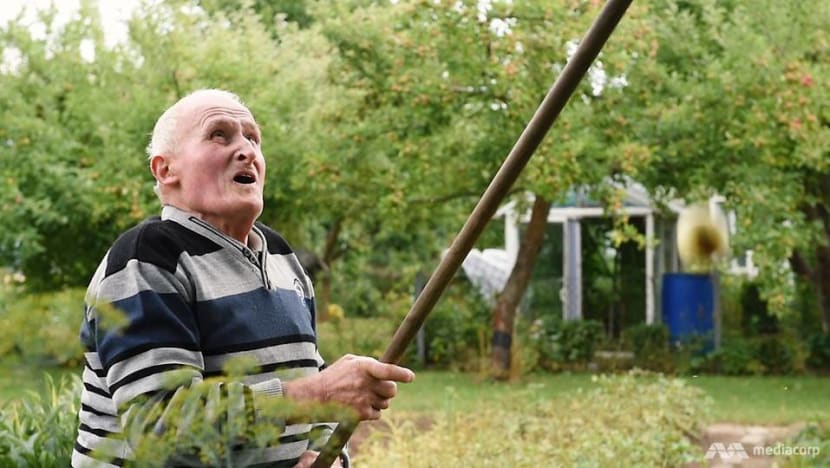
What could prove persuasive is a study is being done on some 700 AOK clients who have undergone ambulatory geriatric rehabilitation (including at Pro Mobil).
It aims to establish if such care does indeed reduce falls and fractures, and hence, nursing home and hospital admissions – as well as health care costs for insurers.
Then there’s the social aspect. At Pro Mobil, even after they have completed their four-week programme. patients still return twice a week for group exercises where they look forward to meeting others.
The problem is that a lot of old people sit alone in their apartments. They are lonely, and slowly they become weaker and weaker.
“So we don’t just train them for four weeks and say ‘okay, you’re fine, bye bye’. The social component is very important too," said Dr Hotzelmann.

PREVENTIVE CARE – THE WAY FORWARD
Ultimately, however, preventive care doesn’t start in old age.
Said 20-year-old Hanes Kolbe, a Berlin resident: “You hear stories of people who start falling really sick (when they’re old). I’m starting to think about what I can do to avoid the possible health problems, even though this is all still very far away.”
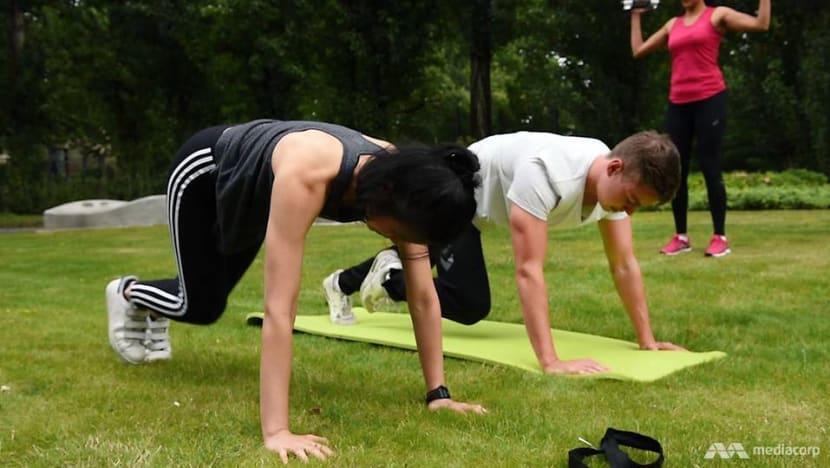
While statutory insurers have been legally obliged since 1995 to include vaccinations and disease screenings in their coverage, these days, the focus has expanded to keeping modern-day chronic diseases at bay through a healthy lifestyle.
“If you want to deal with diabetes, then you have to deal with nutrition. If we want to gain more healthy life in years, we have to change people's’ behaviour,” said Mr Mall.
Which is why insurers like AOK are offering online health and well-being courses, app-powered cash incentives to exercise, as well as tie-ups with gyms or sports clubs which policy-holders can join for free.
“In our modern lifestyle, eight hours of sitting at a desk, we have to use use all kinds of means like apps and programmes to motivate people to move more,” said Sandra Rocha, a physiotherapist at AOK’s preventive department.

Mr Mall added: “I would be content if one day, we can spend more on prevention than on therapy.”
It may take a while, though, to get people on board the idea of planning ahead for healthy old age. But as long-term care expert Thomas Meisner said, summing up: “The demographics have changed, such that people’s lives still go on for 30 years even after they retire. Whether this person spends these 30 years as someone in need of care, or as a healthy person, depends on preventive care,”
CNA Insider’s trip to Germany, to study its approach to long-term care for the elderly, was supported by the Lien Foundation.
Read Part 1, in which we visited the dementia-friendly community of Arnsberg; and Part 2, the magic when seniors and kids do daycare together.
